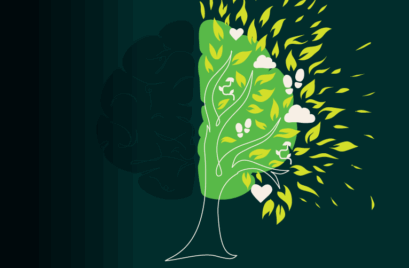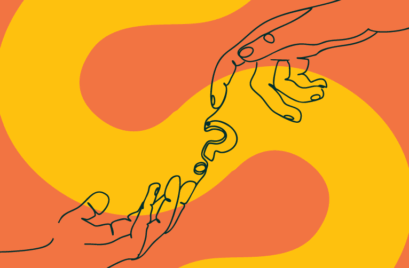
“For me, a regenerative culture is a culture that is consciously building the capacity of everybody in a particular place to respond and change and accepts transformation as something that life just ‘does’.”
Life has an inherent capacity to regenerate, which has sustained it over millennia. This idea sits at the centre of regenerative thinking. How do we tap into this capacity that we are integrally a part of (as much as we might forget it)? How do we harness this as a way of thinking? What could it point to in our ways of interacting and being in the world?
Regenerative cultures, as explored by Daniel Christian Wahl and others, are those social traditions that enable life to flourish. As we know, culture is something that we ascribe to groups within society that are united by certain broad sets of behaviours, customs, or traditions. But culture is also part of our workplaces.
In the organisational and leadership field, we talk about company culture all the time. It is a local subset of culture particular to an organisation and characterises the way that people within the organisation interact and work. So, we wanted to explore the question: what might a regenerative workplace culture look like?
A regenerative workplace culture must be a place that enables life to flourish — both humans and the broader environment. Considering some of the things that have been regenerative for humans for centuries, we might explore in our workplace cultures:
- Connection and deep attunement to place — making our workplaces a part of the local environment through engagement in the community, investing in and prioritising activities on the land. By building the story of our community, we step into a long tradition of place.
- Strong, supportive communities — strengthening our relationships as a community of people rather than just a random grouping of individuals, tied together by a salary. This means trying to move past the mindset of our team members just being “people I work with”, to a community of shared practice, care and passion.
- A collective vision for the future — tapping into a shared purpose that unites us. What is our purpose together and what is the unique impact we can have working as a group?
These aspects of a regenerative culture rejuvenate us and support us in adapting to changing circumstances.

Part of regenerative thinking is also about repairing the damage already done. We know that in many domains of life we’ve gone beyond what systems can safely sustain. For example, in some of our workplaces, we can see the scars of burnout and over-work, even discrimination or bullying. How do we undo this damage and enable each other to flourish? How do we bring more of an ethic of care to bear in the way we show up each day?
Wahl says that through regenerative design we can combat these issues — design that focuses on sustaining “the underlying pattern of health, resilience and adaptability that maintain this planet in a condition where life as a whole can flourish.” How do you bring a regenerative design lens to your organisation? What might this look like showing up in your policies, processes and strategic planning? Which of the factors identified above might come into play?
Once we start to change our mindset into this way of thinking, we find the opportunities are abundant for making our workplaces a space where life flourishes.







